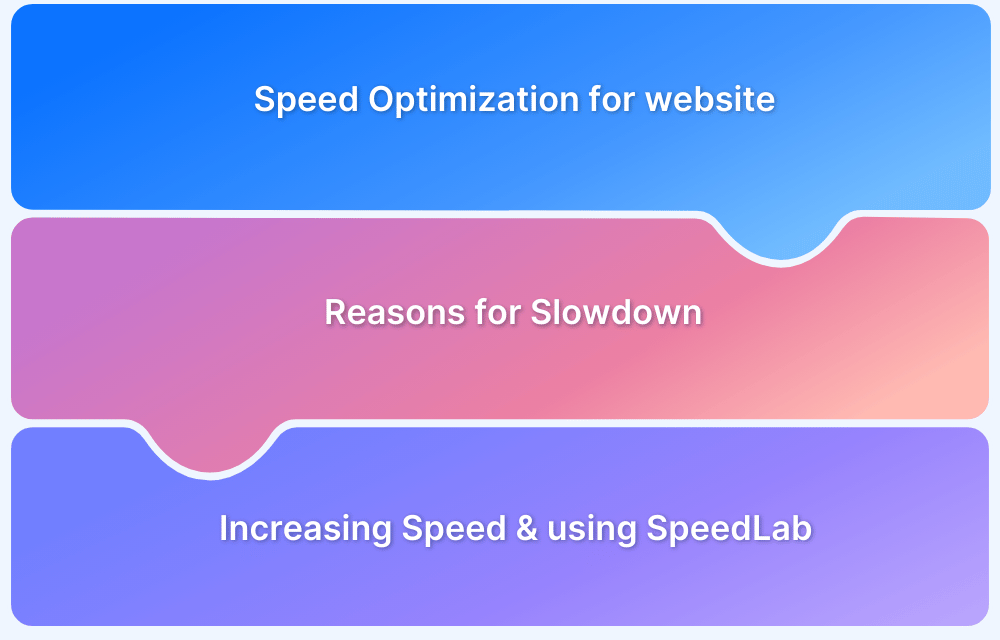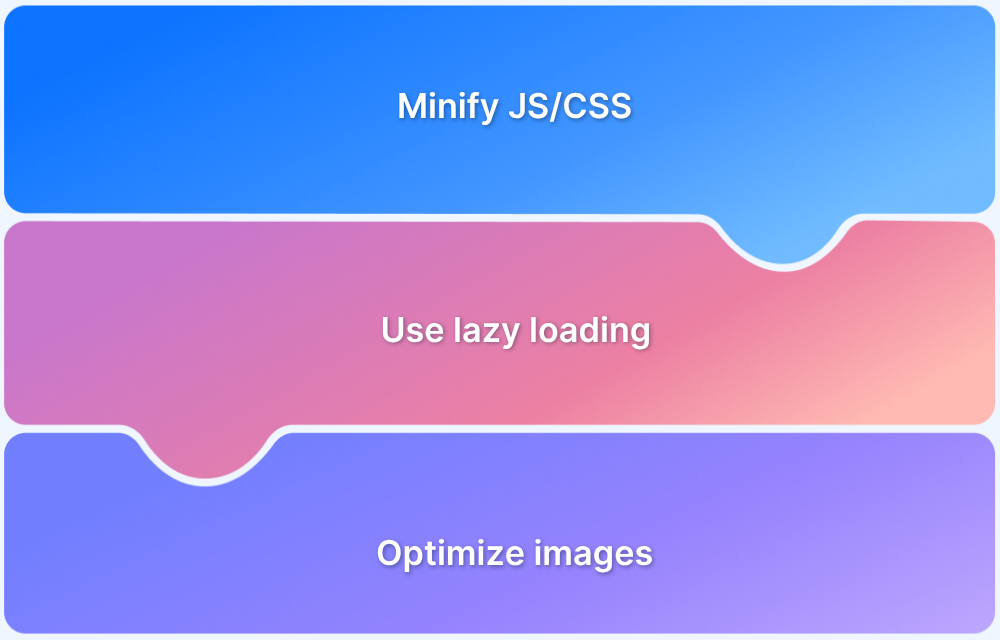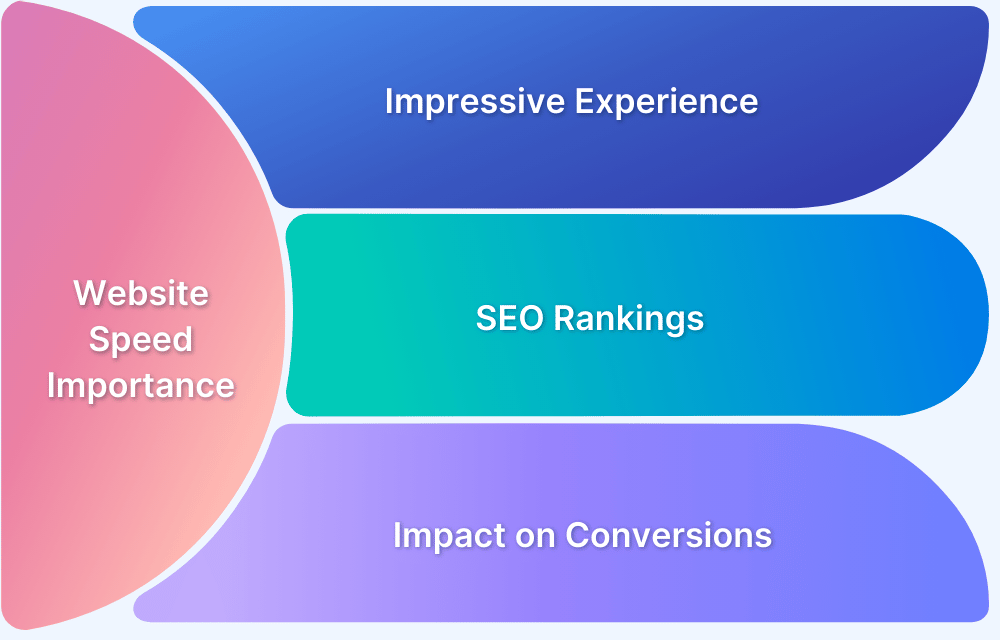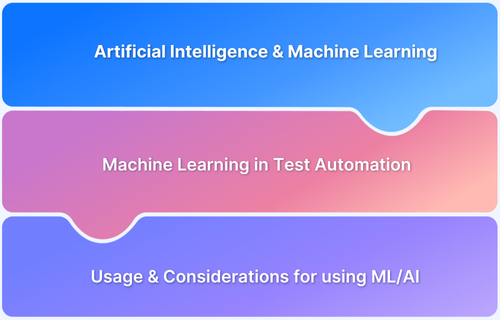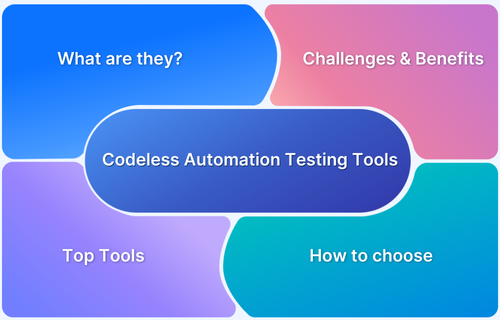LCP (Largest Contentful Paint) is a crucial metric for measuring how quickly the main content of a webpage appears to users. A slow LCP can make your website feel sluggish, directly impacting user experience, engagement, and SEO rankings.
Overview
Largest Contentful Paint (LCP) measures the time it takes for the largest visible content element on a webpage (such as an image, video, or block of text) to load, reflecting the user’s perceived loading experience.
LCP (Largest Contentful Paint) measures:
- The time it takes for the largest visible content element (e.g., image, text block) to be fully rendered on the screen.
- How quickly the main content of a webpage becomes visible to users.
- A key metric for evaluating perceived page load speed and user experience.
- Part of Google’s Core Web Vitals, focusing on user-centric performance.
- Typically measured from when the page starts loading until the largest element is painted.
- Helps assess if a website is fast enough to provide a smooth experience on initial page load.
Factors Affecting LCP:
- Server Response Time (TTFB): Slow server responses delay the loading of critical content.
- Render-Blocking Resources: CSS, JavaScript, or fonts that block the rendering of the main content increase LCP.
- Image and Media Optimization: Unoptimized or large images/videos can significantly delay LCP.
- JavaScript Execution Time: Long-running JavaScript can block the rendering of the page’s main content.
- Network Latency: High latency or slow network conditions can cause delays in loading the largest content element.
This article explores key factors affecting LCP and offers actionable strategies for optimizing your website’s loading performance.
What is LCP?
Largest Contentful Paint (LCP) is a key performance metric used to measure how quickly the most significant content element on a webpage loads. It specifically tracks the time taken for the largest visible element in the viewport, such as an image, video, or block of text, to render after a user initiates the page load.
LCP is part of Google’s Core Web Vitals, which assess user experience based on real-world performance. Unlike other loading metrics, LCP focuses on the content that directly impacts how a user perceives the speed and usability of a website.
A fast LCP indicates that the main content of the page is accessible and engaging, leading to a better overall user experience.
Read More: How to Create a Successful Website
Understanding LCP Metrics
Largest Contentful Paint (LCP) measures the time it takes for the largest visible element in the viewport to load, starting from when the user initiates the page load. This metric is essential for evaluating the perceived loading performance of a website, as it reflects when the main content is fully visible to users.
LCP specifically focuses on the largest elements such as:
- Images: These can be hero images, product photos, or any other visual element.
- Videos: Embedded videos that are visible in the viewport.
- Text Blocks: Large text elements like headings or paragraphs that appear as the main content.
Google classifies LCP into three performance categories to guide improvements:
- Good (≤ 2.5 seconds): The page loads quickly, offering a seamless user experience.
- Needs Improvement (2.5 to 4.0 seconds): The page takes longer to load, and users may start to experience delays.
- Poor (> 4.0 seconds): The page is significantly slow to load, likely leading to poor user satisfaction and a drop in search rankings.
Optimizing LCP is critical for improving page load speed, user engagement, and search engine visibility.
Factors Affecting LCP
Several factors can impact the loading speed of the largest visible element on a webpage, ultimately affecting the LCP score. Key contributors include:
- Server Response Time (TTFB): A slow Time to First Byte (TTFB) means the server is taking too long to respond, delaying the rendering of critical content. Optimizing server performance or switching to a faster hosting service can help improve LCP.
- Render-Blocking Resources: CSS, JavaScript, or web fonts that block the page’s rendering process can delay the display of the main content. Minimizing or deferring non-essential scripts and stylesheets can reduce render-blocking and improve LCP.
- Image and Media Optimization: Large or unoptimized images and videos take longer to load and directly affect LCP. Using modern image formats (e.g., WebP), resizing images for different devices, and utilizing lazy loading can significantly improve loading times.
- JavaScript Execution Time: Excessive or long-running JavaScript can delay the page’s main content from being rendered. Reducing JavaScript execution time by optimizing code and removing unnecessary scripts can lead to a faster LCP.
- Network Latency: Slow or inconsistent network connections, especially for mobile users, can delay resource loading, including images and scripts. Leveraging a Content Delivery Network (CDN) and optimizing resources for mobile can help reduce the impact of network latency on LCP.
Strategies to Improve LCP
Optimizing Largest Contentful Paint (LCP) requires a focus on several areas of performance enhancement to ensure the main content loads quickly and efficiently. Here are key strategies to improve LCP:
Optimize Images and Media:
- Use modern image formats like WebP or AVIF, which offer better compression and faster loading times.
- Ensure images are appropriately sized for different devices using srcset and responsive images.
- Implement lazy loading for non-critical images, but avoid lazy loading above-the-fold content that impacts LCP.
- Preload key images with
to prioritize their loading.
Improve Server Performance:
- Reduce server response time by optimizing backend processes, databases, and using faster hosting solutions.
- Implement caching strategies to serve static content faster and reduce server load.
- Use a Content Delivery Network (CDN) to distribute resources closer to the user’s location, reducing latency and speeding up content delivery.
Minimize Render-Blocking Resources:
- Defer or asynchronously load non-essential JavaScript files to prevent them from blocking the page render.
- Inline critical CSS to reduce external resource fetching and avoid blocking page rendering.
- Optimize CSS by removing unused styles and reducing file sizes.
Optimize Web Fonts:
- Preload important fonts using
to reduce the time it takes to load and render text. - Use font-display: swap to show fallback fonts while the primary font loads, avoiding invisible text during page load.
Leverage Browser Caching:
- Set appropriate cache headers for static resources to ensure that frequently accessed content is stored locally in users’ browsers, speeding up subsequent page loads.
- Use long cache expiration times for static assets like images, CSS, and JavaScript to reduce the need for re-fetching resources on repeat visits.
Common Pitfalls to Avoid
When optimizing for Largest Contentful Paint (LCP), it’s important to be aware of common mistakes that can hinder performance improvements. Here are some pitfalls to avoid:
- Lazy Loading Above-the-Fold Content: Lazy loading images or other media elements that are critical to the page’s initial view can delay the rendering of LCP. Ensure that essential elements are loaded immediately to avoid unnecessary delays.
- Unoptimized Third-Party Scripts: External scripts, such as ads, tracking tools, or social media integrations, can block or slow down the page’s main content. Minimize the use of third-party scripts, or load them asynchronously to avoid impacting LCP.
- Excessive DOM Size: A large Document Object Model (DOM) can increase parsing and rendering times, affecting LCP. Streamline your HTML structure, remove unnecessary elements, and ensure the page’s critical content is rendered first.
- Not Preloading Critical Resources: Failing to preload key resources like fonts, images, and CSS can cause delays in rendering the LCP element. Preloading important assets ensures they’re fetched and available as soon as possible.
- Ignoring Mobile Performance: Mobile users often experience slower network speeds and less powerful devices. Optimizing images, JavaScript, and CSS for mobile devices is crucial to improving LCP for mobile users.
- Overloading with Heavy JavaScript: Heavy or inefficient JavaScript execution can block the browser from rendering the main content. Optimize JavaScript by splitting code, reducing execution time, and deferring non-critical scripts.
Enhance LCP with BrowserStack Website Scanner
BrowserStack Website Scanner helps you enhance LCP by providing detailed performance reports that pinpoint delays related to loading large content elements. The scanner covers the entire page load process, including server response times, resource load delays, and render durations, helping you identify and resolve bottlenecks.
With BrowserStack Website Scanner, you can:
- Detects LCP issues across your website at a granular URL and device level.
- Identify critical resource load delays, such as large unoptimized images or render-blocking scripts.
- Receive actionable recommendations to preload key resources, optimize images, and minimize JavaScript blocking.
- Schedule automated scans to track LCP improvements over time and catch regressions early.
- Test staging and authenticated pages to ensure LCP optimization before production deployment.
By integrating BrowserStack Website Scanner into your optimization workflow, teams can systematically reduce LCP times, delivering a faster, smoother user experience and better search engine rankings.
Conclusion
Optimizing Largest Contentful Paint (LCP) is crucial for improving both user experience and website performance. A fast LCP ensures that users can quickly access the most important content on your site, which leads to higher engagement, better retention, and improved search engine rankings. By understanding the factors affecting LCP, implementing optimization strategies, and avoiding common pitfalls, you can significantly enhance your website’s loading times.
Additionally, using tools like BrowserStack Website Scanner can provide valuable insights into performance issues, helping you pinpoint and resolve bottlenecks that may be hindering LCP. Regular monitoring and optimization of LCP will ensure your site remains fast, responsive, and competitive in today’s fast-paced digital landscape.



